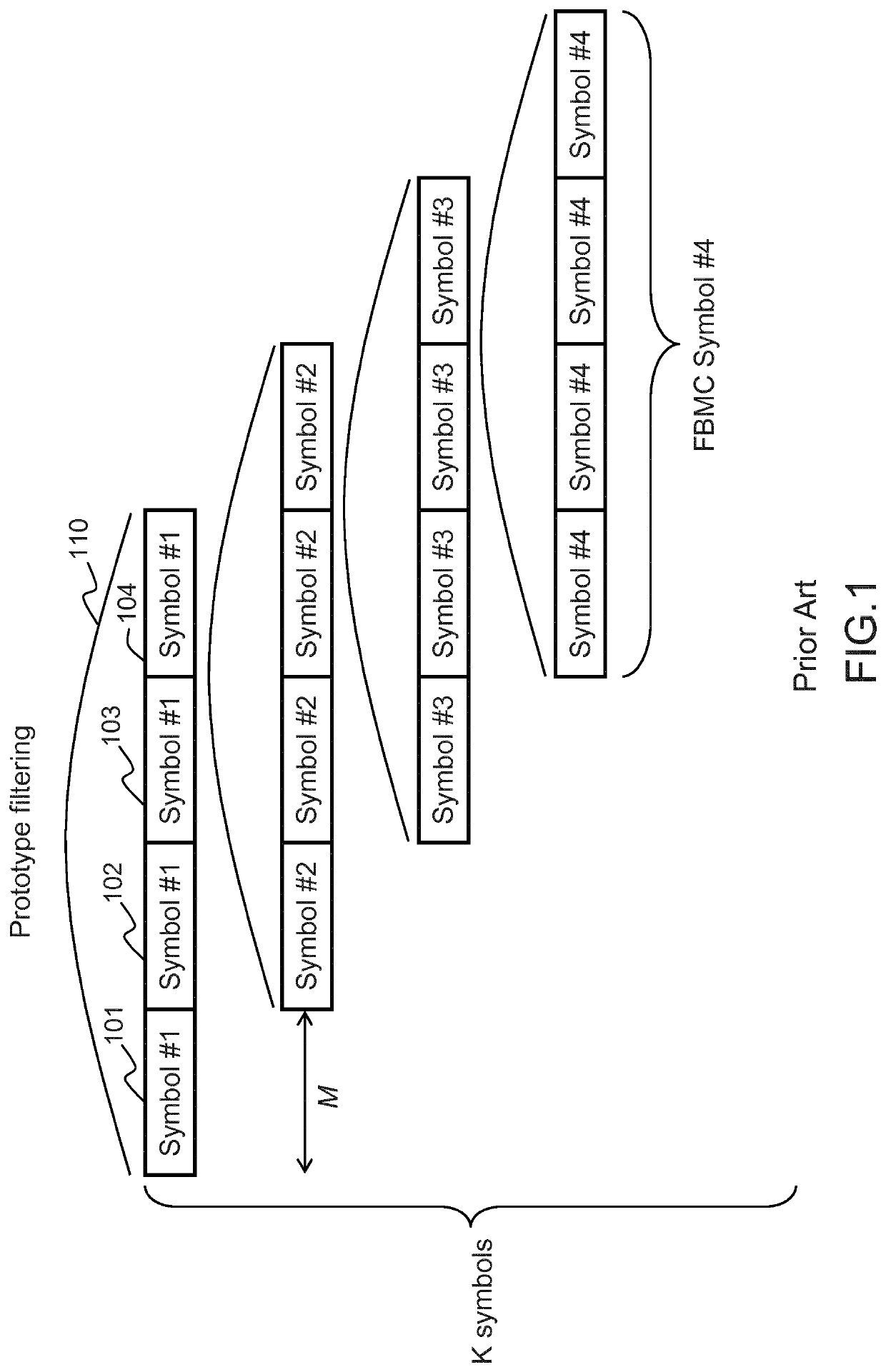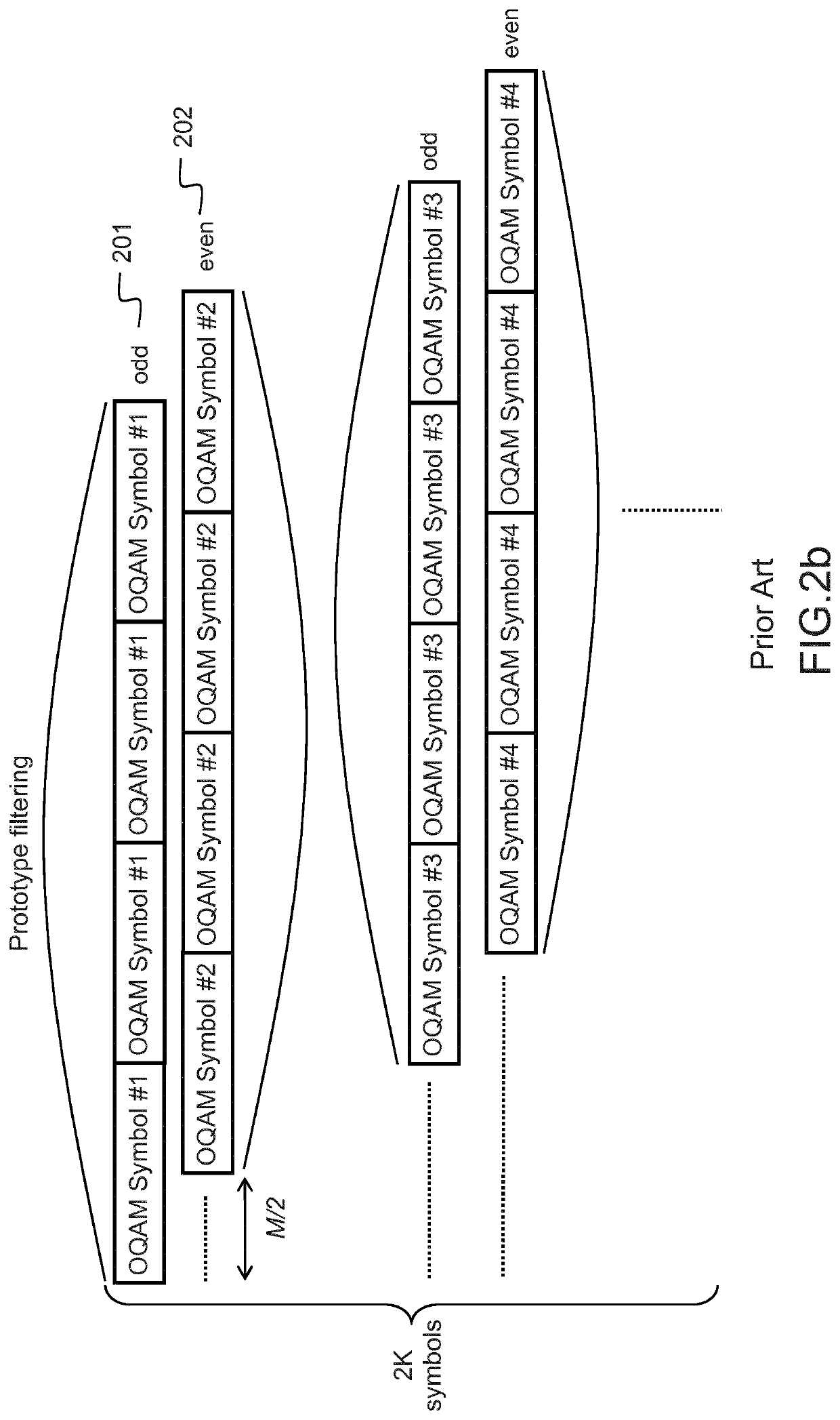Overlap-save fbmc receiver
a receiver and overlap technology, applied in the field of wireless radio communications, can solve the problems of low expected value, increased complexity of the receiving process, and fbmc transmission techniques, and achieve the effects of improving the robustness against doppler effects, increasing the subcarrier spacing, and allowing for communication scenarios flexible
- Summary
- Abstract
- Description
- Claims
- Application Information
AI Technical Summary
Benefits of technology
Problems solved by technology
Method used
Image
Examples
Embodiment Construction
[0084]The invention proposes to modify the processing of the overlap-save FBMC receiver of FIG. 5b, which can hardly be implemented in practice, in order to decrease its complexity. Classical implementations of an overlap-save receiver would consider a P ratio which value is in the order of 1.1 to 4 (depending on the delay spread of the propagation channel), the invention proposes to use a P ratio which value is integer. Indeed, while the complexity of the initial FFT shall suffer from this oversized P ratio, it makes possible to operate major simplifications of the successive computations of the receiver.
[0085]Indeed, by using a P ratio which is an integer, IFFT 530, of size N=PL, can be decomposed using a Decimation In Time method (DIT) into P IFFT of size L plus one additional stage of applying twiddle factors and summing the outputs of the P IFFTs.
[0086]FIG. 6a represents a standard IFFT, taking as inputs N=PL frequency domain samples X(0) to X(N−1), transposing these samples to...
PUM
 Login to View More
Login to View More Abstract
Description
Claims
Application Information
 Login to View More
Login to View More - R&D
- Intellectual Property
- Life Sciences
- Materials
- Tech Scout
- Unparalleled Data Quality
- Higher Quality Content
- 60% Fewer Hallucinations
Browse by: Latest US Patents, China's latest patents, Technical Efficacy Thesaurus, Application Domain, Technology Topic, Popular Technical Reports.
© 2025 PatSnap. All rights reserved.Legal|Privacy policy|Modern Slavery Act Transparency Statement|Sitemap|About US| Contact US: help@patsnap.com



